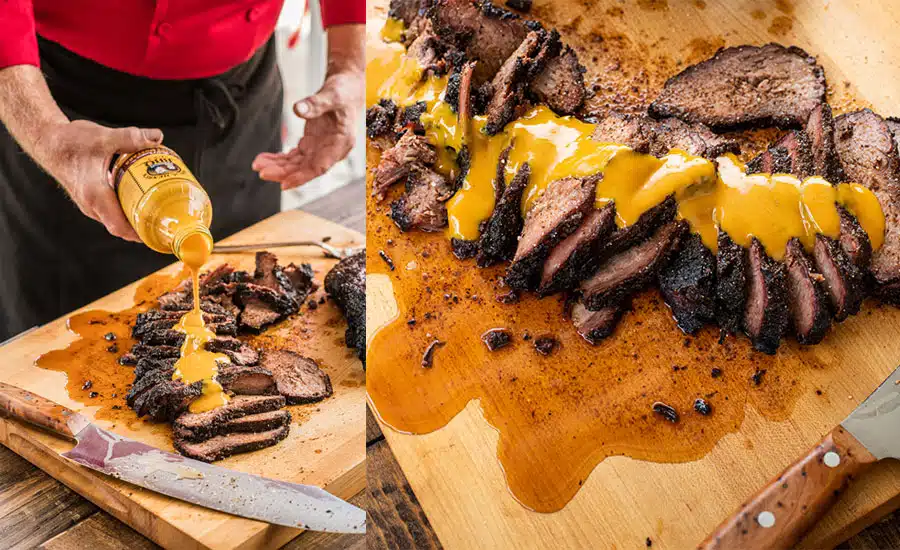In this article, discover why a special barbecue mustard sauce reigns supreme across South Carolina, and how this tangy, sweet mustard took shape.
The Carolinas are home to many barbeque styles, but perhaps none are more distinct than what comes from South Carolina’s midland, affectionately called the “mustard belt.” German immigrants are credited with introducing a special mustard sauce that today reigns supreme across the region from Columbia to Charleston.
It is said that 18th century German settlers, who traditionally ate smoked meats with mustard sauce, arrived to the area with mustard in hand. The sauce was later popularized by Maurice Bessinger, who first bottled and commercialized the yellow condiment in 1939.
Flavor and Appearance
Called “Carolina Gold,” it is distinctly yellow, using yellow or Dijon-style mustard. Yet, the mustard base is only the beginning, as this genius concoction has that perfect symphony of tangy vinegar, a hint of sweet, plus an addictive bit of heat.
Like other Carolina sauces, the barbecue mustard sauce has a good amount of vinegar, and typically contains just a little sugar, producing a sour, tangy flavor. For its subtle sweetness, the neon yellow sauce often features cane sugar or honey, but never molasses, to preserve its bright hue and acidic punch. Boo and Henry’s World Champion Mustard-Style Sauce uses an orange marmalade that hits you in the back of your throat. Spices, like black pepper and cayenne, are added for that extra kick.
Popular Uses
Given its thickness, it’s best used post-cooking as a dipping sauce, or to dress the meat. Sausages taste great dipped in it, and, being from Memphis, I also enjoy it with beef. With thick pork cuts, you need a little more acidity to break through than the mustard sauce offers. This is why we often pair it with a vinegar wash. The sweet mustard also makes for a great rich, tangy condiment with pulled pork sandwiches, cutting through the shredded pork fat to balance it out.
For whole-hog pig pickin’s, apply in advance a dry rub that might include mustard seed. Then slow-smoke the pork over hickory or oak. Baste repeatedly with a thin, East Carolina-style vinegar-pepper mopping sauce before serving the barbecue mustard sauce alongside the plated dish.
Everywhere you go, the Carolinas embody barbeque inspiration and experimentation. While the mustard sauce may differ a little from pit to pit, whether it includes a bit of ketchup or turns up the heat and spice, South Carolina remains loyal to its “gold”-color sauce and age-old Bavarian tradition of pairing pork and mustard.
Key style points:
- Pork, whole hog
- Mustard-vinegar base, with sweetness, spices – sweet and tangy with a bit of heat
- Served on the side for dipping, or poured on post-cooking
- A separate basting sauce is used for cooking

